
pellet cooler machine
Pellet cooler machines are key equipment in cooling systems in modern pellet production processes. It directly affects the cooling and dehumidification effect of the particles and the quality index of the product.
In recent years, with the update of science and technology, cooling technology has been developed prominently. At present, the pellet coolers designed and produced by RICHI have been widely used in the cooling processing of pellet feed, wood pellets, biomass pellets, organic fertilizer pellets, grass pellets, hop pellets and cat litter pellets.
At present, the counterflow pellet cooler widely used in feed mills has the same appearance after cooling, no cracks and smooth appearance, which is convenient for sales, transportation and storage.
Technical characteristics of pellet cooler machine
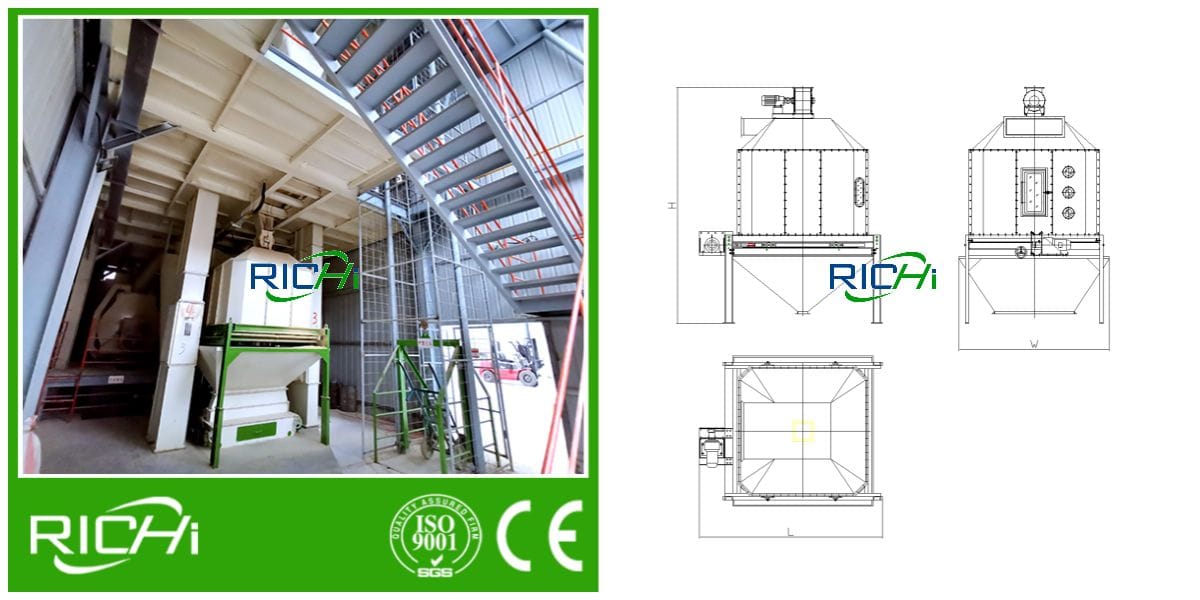
- Using a unique spool valve type discharge mechanism to discharge; the spool valve type discharge mechanism operates stably and reliably, and the discharge is smooth; the temperature of the particles after cooling is not higher than the room temperature +3-5 degrees.
- Simple structure, easy automatic control, safety and reliability, small footprint, low energy consumption, etc., have been widely used in pellet production.
- The feed pellet cooler adopts the cooling air flow and the material flow in the form of relative flow. The air flow direction is opposite to the material flow direction, so that the pellet is gradually cooled in the forward direction, which can avoid the direct contact between the cold air and the high temperature pellet in the general vertical cooler, so that the pellets surface cracking caused by quenching.
- Because the cold air enters the pellet mill cooler from all directions from the bottom, the air intake area is large, and the utilization rate of cold air is high, so the cooling effect is remarkable, and the energy consumption is low, the operation is simple, and the degree of automation is high.
Parameters of pellet cooler machine
Counterflow pellet cooler price: 5000-10000 USD
| Model | SKLN11*11 | SKLN14*14 | SKLN17*17 | SKLN20*20 | SKLN24*24 |
|---|---|---|---|---|---|
| Capacity(t/h) | 1.5-2 | 3-5 | 5-8 | 9-12 | 13-18 |
| Power(kw) | 0.75 | 0.75 | 1.1 | 2.05 | 2.05 |
(Note: Richi Machinery’s products are always updated and improved. Therefore, if there is any difference between the pictures, feature descriptions and performance parameters of the actual model, please refer to the actual product.)
pellet cooler machine projects
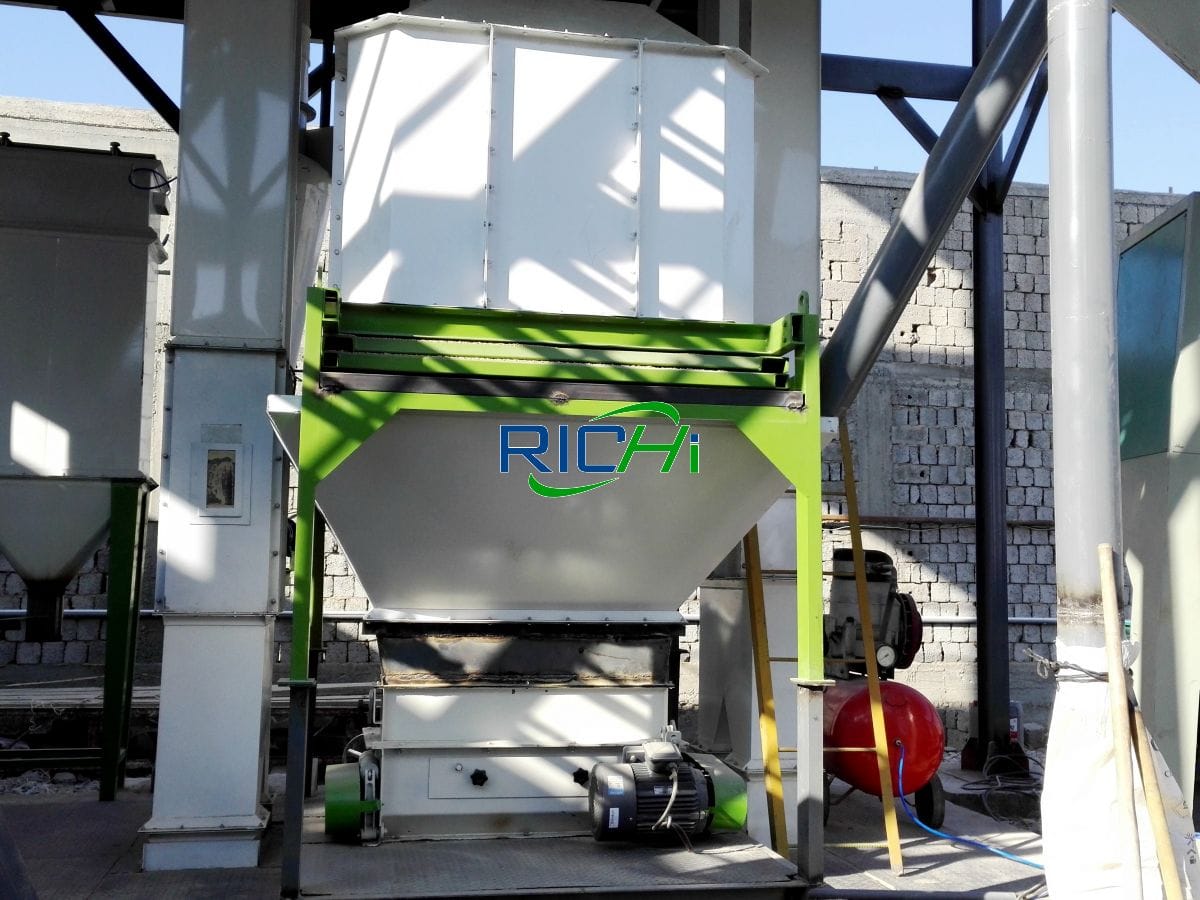
pellet cooler for sale uzbekistan Chicken feed mill

feed pellet cooler for sale 20T/H animal feed mill

feed pellet cooler for sale oman livestock feed mill

pellet cooler for sale romania wood pellet plant

pellet cooler for sale indonesia wood pellet plant
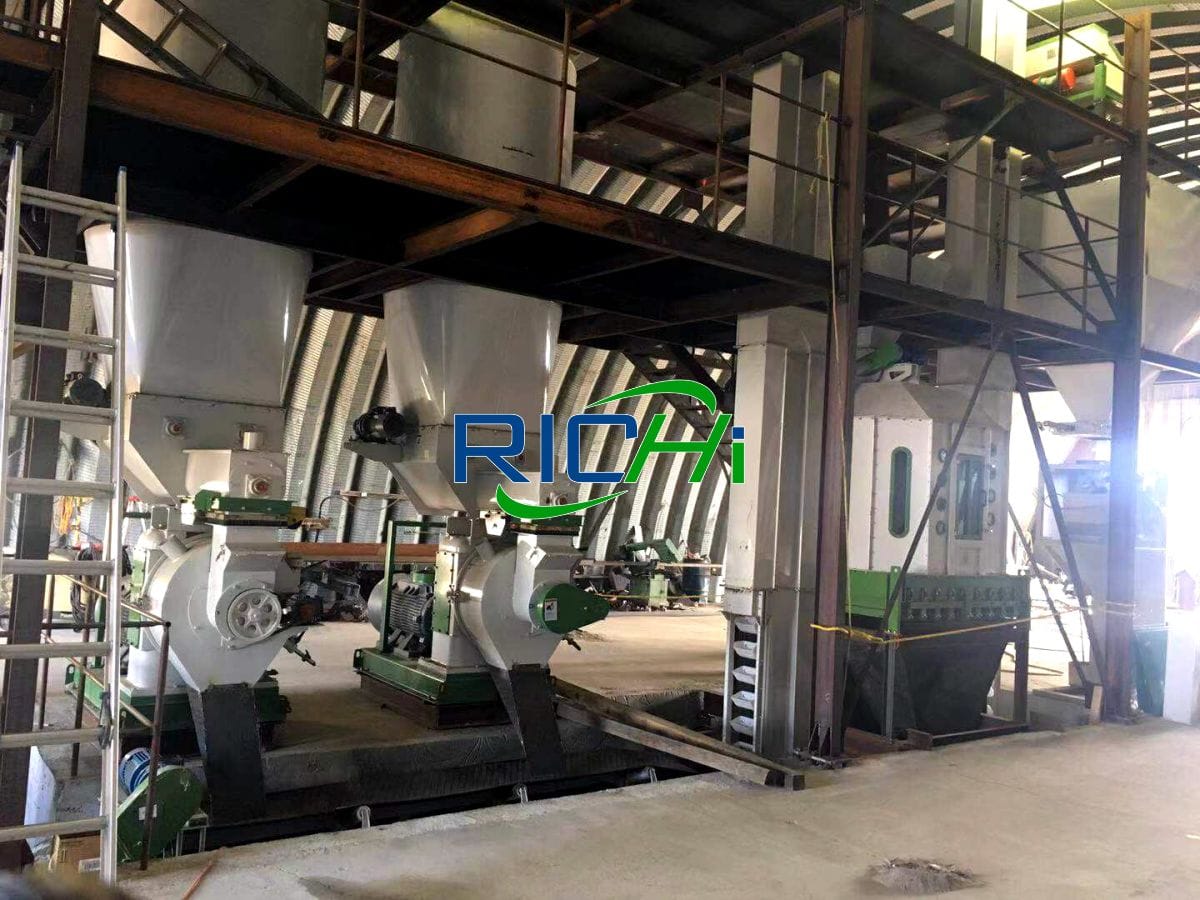
pellet cooler for sale canada wood pellet plant

pellet cooler for Sale Afghanistan 10T/H poultry feed mill
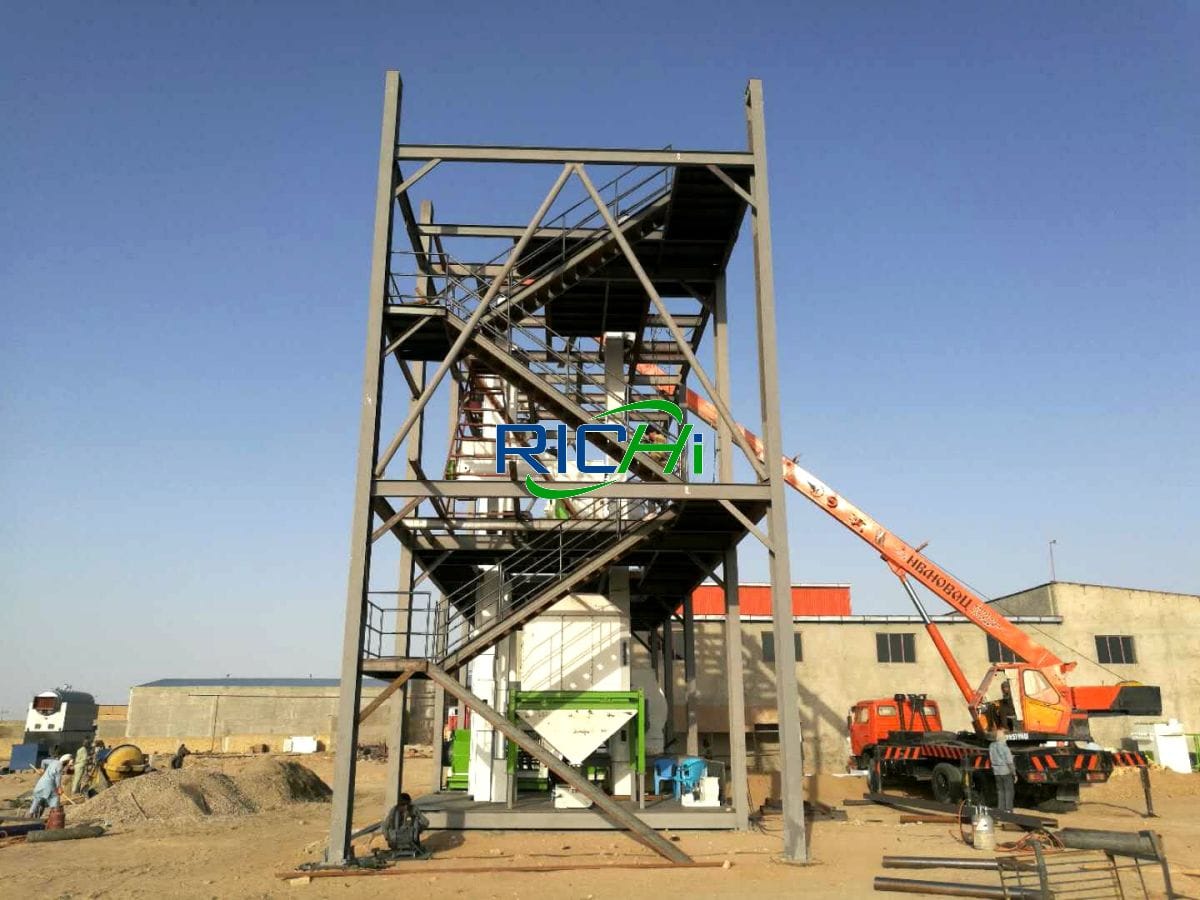
pellet cooler for sale south africa cattle feed manufacturing plant

pellet cooler for sale russia 10T/H animal feed plant
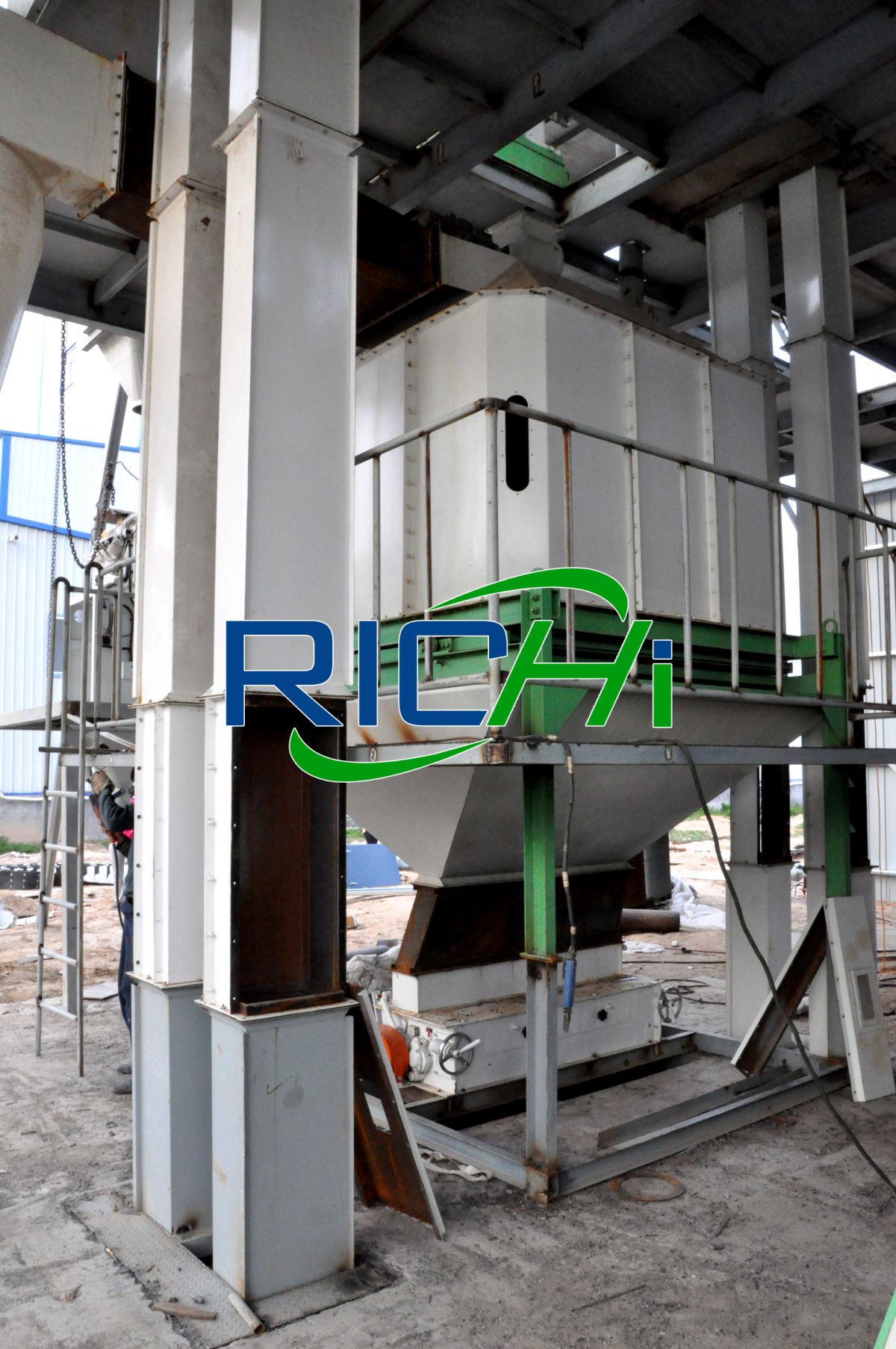
Why Use pellet cooler machine
—— RICHI MACHINERY ——
In the new era of rapid economic development, counterflow pellet coolers, as an important technology for high-temperature particle cooling, are gradually widely used in high-temperature particle cooling and processing in many industries.
In the granulation process, the material must be quenched and tempered with high-temperature steam, and at the same time, the material is strongly squeezed through the die, so that the temperature of the granules can reach about 85℃, and the moisture content can reach about 15%. In this case, the granules are easily broken, and the storage is prone to mildew.
Therefore, the high temperature and high humidity particles after granulation must be subjected to moist heat transfer through cooling treatment, and the surface water and heat added by steam must be diffused in time, so that the particles are cooled to no higher than room temperature 5℃, and the moisture content is reduced to about 12∙5%. This can not only increase the hardness of the granules, but also facilitate the transportation and storage of the granules, and also improve the quality of the finished granules.
With the continuous updating of science and technology, particle cooling equipment has been significantly reformed. At present, in particle cooling, the commonly used cooling technology is counterflow pellet cooler.
Of course, during the production process of the pellet cooling section, it must be ensured that the moisture content after pellet cooling meets the requirements for safe storage. How to effectively control the moisture content of pellets, in addition to the important cooling process, there are many other factors that will affect the moisture content of pellets.

Working principle of pellet cooler machine
—— RICHI MACHINERY ——
The counter-flow cooler adopts the counter-current principle that the cooling air flow direction is opposite to the pellet flow direction. The pellet enters from the top, and the cold air enters the cooling silo from the bottom and vertically passes through the pellet. The cold air and the cold pellets first contact and gradually heat up and then contact with the hot pellets. The temperature rises gradually.
The unique principle makes it have the characteristics of uniform wind speed, large air volume, and small temperature difference between the cooling medium and the pellet; after cooling, the pellet temperature does not exceed room temperature 3 ~ 5℃, and the precipitation rate is not less than 3.8%; Low pulverization rate and high efficiency.
structure of pellet cooler
Pellet cooler machines are key equipment in cooling systems in modern pellet production processes. It directly affects the cooling and dehumidification effect of pellet feed and product quality indicators, such as moisture, pulverization rate, etc. The pellet mill cooler is mainly composed of a feeder, a bulk feeder, a cooling bin, and a discharge mechanism.
01 Feeder
The function of the feeder is to make the pellet evenly enter the silo while blocking the airflow to keep the airflow in the silo stable. The impeller type is generally used, which has simple structure, good sealing effect, not easy to block, and low energy consumption. Since the temperature of the pellets is as high as 75-90℃, the moisture content is 14% to 17%. Therefore, it is mostly made of stainless steel to prolong the service life.
02 Bulk feeder
The function of the bulk feeder is to make the pellet in the cooling bin evenly distributed, evenly exposed to the wind, and uniformly cooled. It has a great influence on the product quality index of pellet feed.

03 Cooling bin
At present, the cooling silo adopts the structure with an octagonal section, which overcomes the cooling dead angle of the traditional rectangular structure, and makes the airflow in the cooling silo more uniform and stable, which is beneficial to the cooling treatment of pellet. The air collecting hood of the cooling bin is easily corroded and is mostly made of stainless steel.
04 Discharging mechanism
The discharge mechanism is the key mechanism of the pellet cooler machine. The main aspects that affect the performance of the pellet mill cooler equipment are: whether the air intake and discharge are smooth and uniform, the size of the crushing force on the material during discharge, whether it is convenient to adjust and empty, and whether it is convenient for various materials. adaptability, etc.
Select and rationally use pellet cooling machines
For more than 20 years, the RICHI engineer team has continuously improved technology and innovation based on the practical experience of production and the development of the pellet production industry, so that the performance, quality and adaptability of products have been continuously improved, and each has its own characteristics.
We suggest that customers should carefully select the type according to the characteristics and requirements of their own products in the use of pellet cooler machines, scientifically support the air network system, and strengthen the vocational training of workers, master the use method proficiently, and correctly grasp the pellet cooling. time, in order to make the performance of the feed pellet cooler device better.

01 Choose a suitable pellet cooler and configure a reasonable air net
In the pellet cooling process, it is essential to select high-efficiency counterflow pellet cooler and a reasonable air network. In addition, the moisture content of raw materials before granulation and the quality and amount of steam added during granulation must be strictly controlled, so as to ensure that the moisture content of finished granules meets the quality indicators.
The cooling air network is an indispensable auxiliary system for cooling equipment. Whether its structure is reasonable has a greater impact than the pellet cooler machine. In animal and aqua feed mills, problems such as cooling air ducts, blockage of dust collectors, powder running at the air outlet, and backflow of condensed water in winter are all cold. However, the design or installation of the wind net is unreasonable.
Therefore, when using a pellet cooler, an effective air network system must be designed according to the relevant data provided in the feed pellet cooler manual. The air network system is an indispensable equipment for providing cooling air source. It is mainly composed of a dust collector, an air shutoff device, a fan and an air duct.
After the cooling air network is configured, the following points should be paid attention to in order to ensure a good use effect:

- (1) Shorten the length of the entire air network system as much as possible, reduce the number of variable heads, prevent powder from depositing in the pipeline, and avoid excessive pressure loss, which will reduce the air volume and affect the cooling effect of pellet mill cooler.
- (2) Shorten the length of the horizontal air duct as much as possible to prevent the generation of condensed water. Especially in winter, insulation materials can be wrapped in appropriate positions, which can reduce the generation of condensed water and the resulting powder that blocks the air duct.
- (3) Reasonably select the wind speed and adjust the wind speed. The air volume adjustment device should be installed on the pipeline, which can adjust the air volume so that the steam can be discharged outdoors before condensation.
- (4) Reasonably design the diameter of the air duct so that there is enough wind speed in the duct. Generally, the wind speed in the air duct should be guaranteed to be 13-16m/s. If it is less than 12m/s, the dust in the air duct is easy to accumulate in the duct, and it is easy to produce condensed water.
- (5) The entire air network system should be inhaled, that is, work under negative pressure. The fan is placed behind the dust collector, so that the fan blades will not absorb wet dust, ensure the working environment of the fan, and avoid causing the fan to vibrate and increase the noise.
- (6) Special dust collectors and cooling fans are used. When designing and installing air ducts, consideration should be given to ease of cleaning in the future. In order to ensure the quality of pelleted feed, in addition to selecting a suitable pellet cooler machine, it is also necessary to strictly control the moisture of raw materials before pelleting, the quality of steam and the amount of steam added during pelleting.
02 Control the moisture content of raw materials
At present, in the pellet production process, coolers are used to reduce the moisture and heat added to the finished pellets due to the high temperature steam conditioning during the pelletizing process, so that the moisture of the finished pellets returns to the original moisture content before pelleting.
Taking feed pellets as an example, it is made from a variety of raw materials through scientific formulation and careful processing. The original moisture of the raw materials must undoubtedly be reflected in the finished pellets. When the raw material moisture exceeds the standard, the processing technology of the general feed factory cannot solve the problem of excessive moisture of the finished pellets caused by the excessive moisture of the raw material if it is not cooled by feed pellet cooler and then dried.
It is necessary to ensure that the moisture content of the pellets reaches the quality target. The first step is to control the moisture content of the raw materials. Corn occupies a large proportion in compound feed, and its standard moisture is higher than that of compound feed, so it is necessary to focus on controlling the moisture content of corn in raw materials. Therefore, when the feed factory organizes the purchase of raw materials, in addition to testing the main nutritional indicators, it should also pay attention to testing the moisture content.
If the moisture content of the raw material exceeds the standard, other methods must be used before granulation to make the moisture content meet the quality requirements. Only by strictly controlling the moisture content of various raw materials, can the finished pellets finally meet the quality indicators for safe storage.
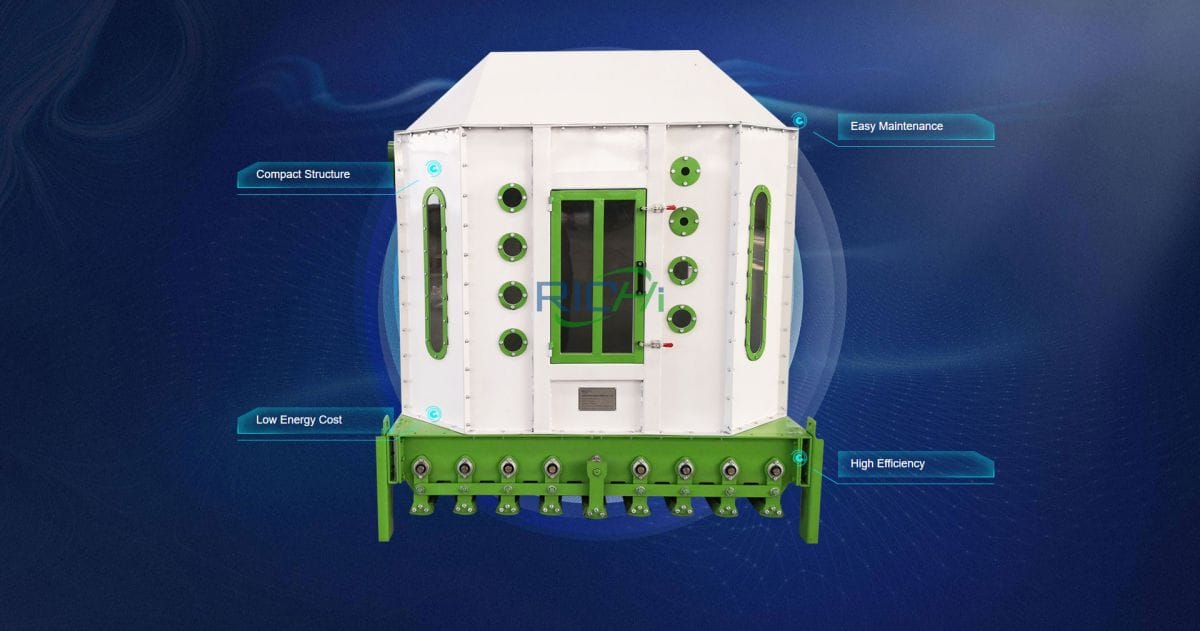
03 Control the quality of steam
The quality and amount of steam added directly affects the moisture content of the finished pellets, yet is ignored by many feed mills. Granulation is suitable for dry saturated steam and should not contain condensed water. The suitable steam pressure is generally 0∙2~0∙4MPa. The steam pressure remains basically stable, and the pressure fluctuation should generally not be greater than 0∙05MPa. In order to ensure that no condensed water enters the conditioning system, the boiler room should be as close as possible to the main workshop, and buffer sub-cylinders are installed in both the boiler room and the main workshop.
The steam is transported at high pressure, and an automatic drainage device is installed in the delivery pipe and at the bottom of the sub-cylinder. The distance between the steam-water separator and the pellet making machine in the main workshop should not be too far, the return water pipeline should be arranged vertically, and the water trap and the water drain shut-off valve should be connected below to effectively remove the condensed water. The control of steam quality has a great influence on the moisture of pellets, and a steam system that meets the requirements can achieve twice the result with half the effort.
In short, animal feed mill plant should continue to explore and summarize experience in the production process. Only by reasonably and effectively controlling the quality of the steam, can the moisture be controlled and the quality of the finished pellets be improved.
Richi Machinery——Provide customized cooling system solutions
Pellet cooler machines are used in a wide range of industries (feed industry, energy industry, organic fertilizer industry, food industry, agriculture, etc.) and Richi Machinery has many years of experience in designing and optimizing cooling systems. Factors such as pellet cooling machine size, retention time, amount of cooling air, and evaporation of moisture play an important role in the cooling process.
Changing these parameters can have a significant impact on the final product. For example, the cooling process is even more dependent on the product characteristics and conditions of the intake air than a dryer. Small changes can have a big impact on cooler machine cooling and moisture management.

Are you still facing these challenges in the cooling process:
- The final product does not reach the ideal cooling temperature;
- The cooling temperature of some products is too high or locally high;
- The product is sucked into the exhaust port;
- The outlet of the cyclone separator is blocked;
- The dust collector is quickly blocked by dust and becomes dirty;
- Over time, the cooling time is too long;
- The moisture requirement of the final product is low, and the cooling moisture level of the existing process cannot meet the shelf life;
- The process coordination problem of cooler and exhaust filter when the capacity of pellet production line is increased.
- . . .
Whatever your question is, if you’re wondering:
- Want to change products faster, with various options, what is the solution without any changes to the existing chiller mainframe?
- How to prevent air leakage, arching, condensation and fouling in the pellet cooling machine?
- How to prevent significant temperature differences between storage and products?
- How to avoid short shelf life of products stored in warm conditions?
- . . .
Richi Machinery can help with all these and other questions about pellet cooler machines, feel free to contact us!